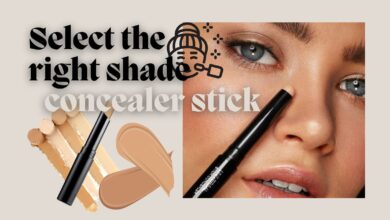Avoiding Disaster: How to Deal with Botched Upper Eyelid Surgery
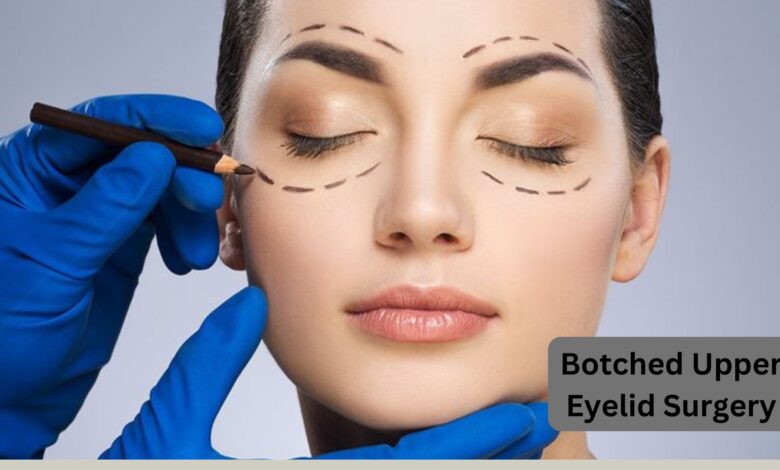
Understanding Botched Upper Eyelid Surgery
Botched Upper eyelid surgery, also famous as blepharoplasty, is a beautifying procedure that removes extra skin, and weight, and plumping from the upper eyelids. This process can help improve the presence of hooded, baggy, or puffy upper eyelids, making the eyes appear sleepy or aged. While upper eyelid surgery is generally a safe and active procedure, worries can sometimes occur, leading to substandard results.
What are the benefits of eyelid surgery?
Eyelid surgery, also called blepharoplasty, is a popular cosmetic procedure to improve eye appearance. It’s faster to recover from than a facelift because it involves fewer cuts and procedures. This surgery is great for fixing droopy or puffy eyelids, and it can also improve vision by correcting droopy eyelids that block sight. Many people seek eyelid surgery in London to address these issues and enhance their eye look.
Common Complications of Upper Eyelid Surgery
Some of the most common complications connected with upper eyelid surgery include:
Irregularity
One eyelid may appear noticeably different from the other, either in terms of shape, size, or position.
Eyelid negation
The eyelid may be pulled back too far, exposing more of the white of the eye (sclera).
Eyelid lag
The upper eyelid may not close correctly, leading to a “staring” arrival or trouble closing the eye.
Damaging
Visible scarring or solidifying of the incision line may occur, especially if the skin does not heal properly.
Dry eyes
The tear glands may be artificial, causing persistent dryness and irritation.
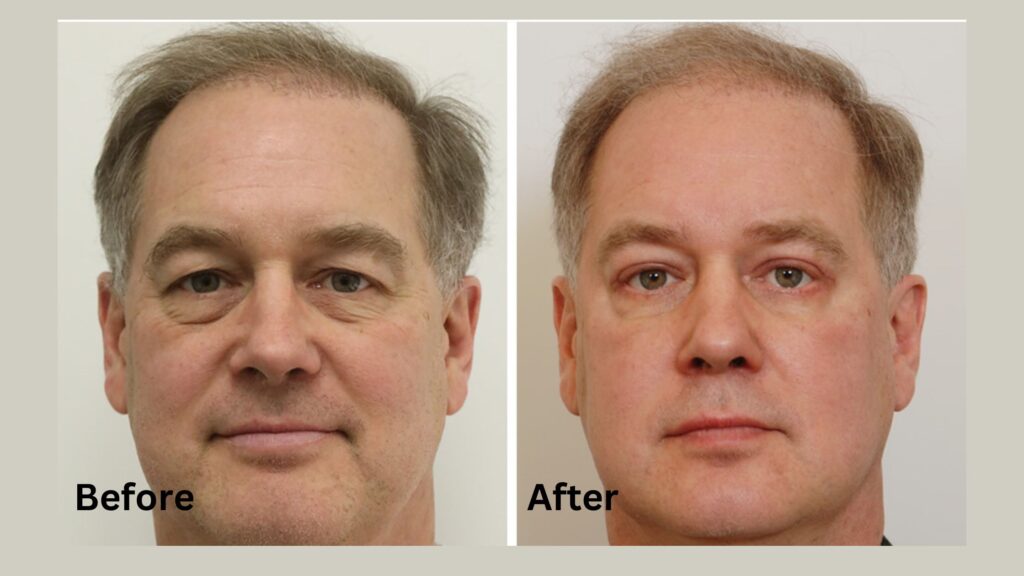
Signs of a Botched Upper Eyelid Surgery
If you have recently undergone upper eyelid surgery and are feeling any of the following issues, it may be a sign that the procedure was not successful:
- Significant irregularity between the eyelids
- Difficulty concluding the eyes or a “staring” appearance
- Unwarranted scarring or thickening of the opening line
- Stubborn dryness, anger, or worry in the eyes
- Obvious changes in the shape or location of the eyelids
- Immediate Steps to Take if You Suspect a Botched Upper Eyelid Surgery
If you suspect that your upper eyelid surgery has been botched, it’s important to take immediate action. Here are the steps you should take:
Contact your doctor
Reach out to the surgeon who performed the procedure and express your concerns. They may be able to provide guidance or schedule a follow-up appointment to assess the situation.
Seek medical courtesy
If you are experiencing significant discomfort, pain, or any other concerning symptoms, it’s important to seek medical attention right away. This may involve visiting your primary care physician, an ophthalmologist, or the surgeon who performed the procedure.
Text the issues
Take photos of your eyes from different angles and keep a thorough record of any changes or issues you are feeling. This certification can be helpful when seeking a second opinion or hunting remedial dealing.
Seeking Professional Help and Second Opinions
If you are not satisfied with the response or treatment provided by your original surgeon, it’s important to seek a second opinion from another qualified plastic surgeon or ophthalmologist. This can help you better understand the extent of the problem and explore your options for corrective treatment.
When seeking a second opinion, be sure to:
Research and choose a reputable surgeon with experience in eyelid surgery and revision procedures.
- Provide the new surgeon with your medical records, including any documentation or photographs you have collected.
- Be set to discuss your concerns and the issues you have experienced in detail.
- Ask the new surgeon for their professional taxation and suggested course of action.
- Corrective Options for a Botched Upper Eyelid Surgery
Conditional on the specific issues you are suffering that may be available to address a botched upper eyelid surgery:
Revision surgery: In some cases, a revision or corrective surgery may be necessary to address issues such as asymmetry, eyelid retraction, or scarring. This involves additional surgical procedures to correct the underlying problems.
Non-surgical treatments: In milder cases, non-surgical treatments such as injectable fillers, Botox, or laser resurfacing may be used to improve the appearance of the eyelids and reduce the visible signs of a botched procedure.
Scar management: If excessive scarring is a concern, specialized scar management techniques, such as steroid injections or silicone scar sheets, may be recommended to help improve the appearance and texture of the incision site.
It’s important to work closely with your surgeon to determine the best course of action based on your specific needs and the extent of the issues you are experiencing.
How can I make sure I don’t end up with a bad eyelid surgery?
The best way to steer clear of bad cosmetic surgery, like an eyelid lift, is to do your homework before you decide on a surgeon and a procedure. There are tons of cosmetic surgeons out there in the US, but their experience, skills, and the care they give can vary.
- When you’re on the hunt for a cosmetic surgeon to do your eyelid lift, check out:
- Where they went to school and trained to make sure their certifications are real.
- If they’re part of any board or other professional group, they can do surgery up to the top-notch standards these groups require.
- How often do they do eyelid lifts?
- What the public sees about them online.
- Examples of their work.
Then, make sure you take the time to chat with them about your situation and learn more about what to expect from your eyelid lift.
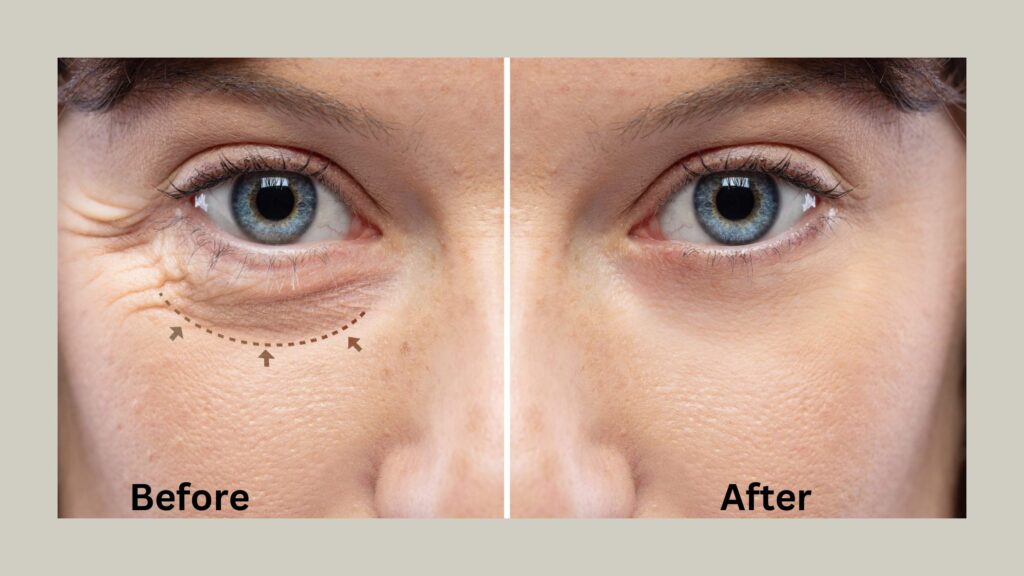
Recovering from a Botched Upper Eyelid Surgery
Botched upper eyelid surgery can be a challenging and emotionally demanding process. Here are some tips to help you finish the recovery period
Give yourself time to recover.
The time it takes to heal can vary seriously depending on your surgery. Be sympathetic and adhere to your doctor’s advice closely.
Handle pain and discomfort.
Your doctor might propose painkillers or advise on using non-prescription pain relievers to ease any pain during your curative phase.
Look after your eyes.
When you’re outside, wear shades and steer clear of gears that could cause problems with your eyes, like spinning or using eye grease paint.
Find emotional support
Steering through the penalties of a failed surgery can be rough on your feelings. Think about getting in touch with loved ones, family, or a mental fitness expert for help and to ease the strain and worry.
Steering Clear of a Failed Upper Eyelid Surgery: Selecting the Perfect Surgeon
The key to sidestepping a failed upper eyelid surgery lies in selecting the appropriate surgeon. Here are a few pointers to assist you in identifying a skilled and seasoned surgeon:
Conduct research and make comparisons
Look for surgeons who are board-certified in plastic surgery or ophthalmology, and who have a wealth of experience in eyelid surgery. Compare their qualifications, certifications, and feedback from patients.
Find out about their expertise
Find out how much experience the surgeon has with upper eyelid surgery, including the volume of surgeries they’ve done and their success rates.
Request photos of before-and-after cases
Request to view the surgeon’s portfolio, including before-and-after photos of their previous patients. This can help you gauge their expertise and sense of aesthetics.
Book a consultation
During the consultation, observe how the surgeon communicates, their readiness to address your inquiries and their general approach to the surgery.
Questions to Ask Your Surgeon Before Undergoing Upper Eyelid Surgery
- When considering upper eyelid surgery, it’s important to talk to your doctor about several questions to ensure you’re making an informed decision. Some main queries to ask include:
- What are the potential risks and complications associated with the procedure?
- How will the surgery be conducted to achieve the desired results?
- What is your experience in performing upper eyelid surgery, and what percentage of your patients are happy with the results?
- How will you manage any potential issues or complications that may arise during or after the surgery?
- What is the anticipated recovery time, and what can I do to facilitate a speedy and successful recovery?
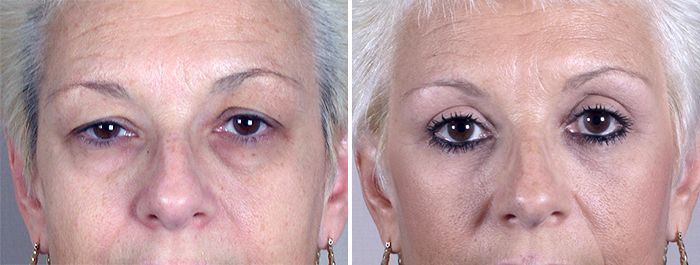
Conclusion
Revolving the tests following a useless upper eyelid procedure can be a stressful and daunting task. Nonetheless, by adopting the correct strategy and receiving advice from certified healthcare experts, it’s feasible to tackle the problems and attain the expected outcomes.
Must you find yourself facing problems or problems after upper eyelid surgery, please don’t delay in the hunt for expert assistance. Reach out to us now to arrange a summit with one of our skilled plastic surgeons or ophthalmologists. They will evaluate your state and offer you the most suitable solution to resolve your issues.
- Primary Keyword: Botched Upper Eyelid Surgery
- Secondary Keywords:
- Botched Upper Eyelid Surgery
- Eyelid Surgery Problems
- Remedial Eyelid Surgery
- Selecting the Right Eyelid Specialist
- Improving from Botched Upper Eyelid Surgery
Frequently Asked Questions
How should I prepare for eyelid surgery?
Start by scheduling a consultation with a board-certified oculoplastic surgeon to determine if you are a good candidate. It’s important to stop smoking and avoid medications such as aspirin, which can increase the risk of bleeding. Position for a friend or family fellow to drive you home after the process.
What does eyelid surgery involve?
Eyelid surgery, also known as blepharoplasty, typically involves the removal of excess skin, tightening of the muscles, and sometimes the removal of fat from the upper or lower eyelids. This procedure is usually performed under local anesthesia with sedation or general anesthesia, to rejuvenate the eye area.
What is the rescue process like next eyelid surgery?
After eyelid surgery, you can expect mild discomfort, bruising, and swelling that may last up to two weeks. To manage these symptoms, it’s recommended to use cold compresses and keep your head elevated. It’s important to follow your surgeon’s instructions regarding care and when it’s safe to resume your normal activities.
How can I tell if my upper eyelid surgery was botched?
Signs that an upper eyelid surgery may have gone wrong include asymmetry between the eyes, difficulty fully closing your eyes, and persistent pain or changes in vision. If you experience symptoms that last beyond the expected recovery period, it’s crucial to consult with a specialist right away.
Can botched upper eyelid surgeries be corrected?
Absolutely. A revision blepharoplasty can address complications from previous surgeries by tailoring techniques to specific issues, such as removing excess scar tissue or adjusting tissue contours. The complexity of your case will depend on the outcome of your initial surgery.
What is revision blepharoplasty and what techniques are used?
Revision blepharoplasty is a procedure designed to correct complications arising from previous eyelid surgeries. It involves various techniques, including the removal of scar tissue and the adjustment or repositioning of tissues. This procedure requires careful planning by an experienced plastic surgeon specializing in eye surgeries.
How Can I Find a Specialist to Correct a Botched Upper Eyelid Surgery?
When seeking a specialist to correct a botched upper eyelid surgery, it’s important to choose a board-certified plastic surgeon with a proven track record in facial procedures, especially blepharoplasty. Find out about their success rates with blepharoplasty and appeal before-and-after photos of their earlier patients. Additionally, checking their reviews can provide valuable insights into other patients’ experiences.



